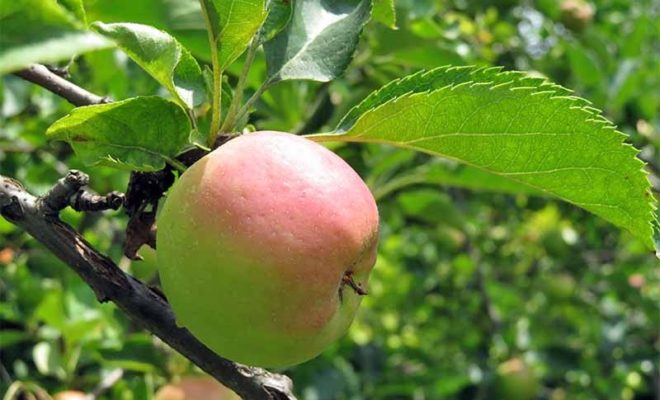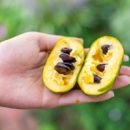Fruit Tree Pollination: Understanding the Importance of Cross-Pollination and Best Practices

Introduction
Fruit trees play a vital role in our gardens, providing us with delicious and nutritious fruits. However, many people are unaware of the intricate process of pollination that takes place to ensure a successful fruit harvest. In this article, we will delve into the significance of cross-pollination in fruit tree cultivation and explore the best practices for achieving optimal pollination results. Whether you’re an avid gardener or a curious enthusiast, understanding these concepts will help you enhance your fruit tree yields and enjoy a bountiful harvest.
The Basics of Pollination
What is Pollination?
Pollination is the process by which pollen grains are transferred from the male reproductive organ (stamen) of a flower to the female reproductive organ (pistil). It leads to fertilization, enabling the growth of seeds and the development of fruit.
Types of Pollination
There are two main types of pollination: self-pollination and cross-pollination. Self-pollination occurs when the pollen from a flower’s stamen fertilizes the same flower’s pistil. Cross-pollination, on the other hand, involves the transfer of pollen between flowers of different trees or varieties.
Cross-Pollination: Enhancing Fruit Tree Cultivation
Cross-pollination is of great importance in fruit tree cultivation for several reasons. Firstly, it plays a crucial role in maintaining genetic diversity within fruit tree populations. Genetic diversity is essential for the overall health and resilience of the trees. When different varieties of fruit trees cross-pollinate, it introduces genetic variations that can enhance disease resistance, fruit quality, and overall tree vigor. This diversity also helps to mitigate the risk of crop failure caused by environmental factors such as extreme weather conditions or pest outbreaks.
Furthermore, https://www.fruit-trees.com/ explain that cross-pollination often leads to increased fruit set and improved fruit quality. Many fruit trees have mechanisms to prevent self-pollination, ensuring that only pollen from another variety can fertilize the flower. This process promotes outbreeding, which brings together the best genetic traits from different trees, resulting in the development of healthy and robust fruits.
For some fruit tree varieties, cross-pollination is not just beneficial but essential. These trees, known as “self-unfruitful” or “self-sterile,” are incapable of producing fruits without cross-pollination. In such cases, understanding the compatibility between different fruit tree varieties becomes crucial for establishing fruitful pollination partnerships in your garden. Researching the pollination requirements of each tree and ensuring you have suitable companions will maximize the productivity of your orchard.
Best Practices for Fruit Tree Pollination
To ensure successful cross-pollination and maximize fruit production, there are several best practices you can follow:
Choosing Pollination Partners
When selecting fruit tree varieties for your garden, it is important to consider their pollination requirements. Some trees are self-fertile and can produce fruits without cross-pollination. However, many others require compatible partners for successful fruit set. Research the pollination needs of each tree and ensure you have suitable companions nearby to facilitate cross-pollination.
Planting Distance and Layout
To facilitate cross-pollination, it is crucial to plant fruit trees in close proximity to each other. Most fruit trees rely on pollinators such as bees, butterflies, and other insects to transfer pollen. By planting trees within 50 feet of each other, you increase the chances of successful pollination. Additionally, consider the layout of your orchard to ensure efficient movement of pollinators between trees. Grouping trees in clusters or creating windbreaks can help guide pollinators and enhance the pollination process.
Pollinator-Friendly Garden Practices
Creating a pollinator-friendly environment is essential for successful fruit tree pollination. Avoid using harmful pesticides during bloom, as they can harm beneficial insects and disrupt the pollination process. Instead, opt for organic pest management methods that are safe for pollinators. Planting native flowering plants nearby will attract pollinators and provide them with food sources throughout the season. By providing a diverse range of flowers, you’ll encourage a healthy population of pollinators, ensuring efficient cross-pollination.
Timing and Synchronization
To ensure effective cross-pollination, it is crucial to choose fruit tree varieties that bloom at the same time or have overlapping bloom periods. This synchronization allows pollinators to easily transfer pollen between flowers, increasing the likelihood of successful fertilization. When planning your orchard, consider the bloom times of different varieties and select compatible partners accordingly.
Cross-Pollination and Pollinator Diversity:
In addition to the benefits of genetic diversity and enhanced fruit set, cross-pollination also relies on the presence of diverse pollinators. Different pollinators have varying preferences for flower types, shapes, and sizes, and they play a crucial role in carrying out the pollination process. By attracting a wide range of pollinators to your garden, you can increase the chances of successful cross-pollination.
To attract diverse pollinators, incorporate a variety of flowering plants in your garden. Native wildflowers, herbs, and shrubs are particularly attractive to pollinators, as they provide ample sources of nectar and pollen. Consider planting flowers with different bloom times to ensure a continuous food supply for pollinators throughout the growing season. Creating habitat features such as bee hotels, water sources, and sheltered areas can also help support a diverse pollinator population.
Encouraging native bees, butterflies, hoverflies, and other beneficial insects to visit your garden not only promotes cross-pollination but also contributes to the overall health of your ecosystem. These pollinators are essential for the reproduction of many plant species and provide valuable ecosystem services. By creating a pollinator-friendly garden, you contribute to the conservation of these important insects and promote a sustainable and thriving environment.
In Conclusion
Understanding the significance of cross-pollination in fruit tree cultivation is vital for achieving successful and abundant harvests. Through cross-pollination, fruit trees benefit from genetic diversity, improved fruit quality, and increased fruit set. By implementing best practices such as selecting compatible pollination partners, optimizing planting distances, creating a pollinator-friendly garden, and ensuring proper timing, you can create an environment that supports efficient cross-pollination.
Remember to choose fruit tree varieties that complement each other’s pollination requirements and provide a suitable layout in your garden to facilitate pollinator movement. Embrace sustainable gardening practices by avoiding harmful pesticides and instead opting for organic pest management methods. Foster a diverse range of pollinators by incorporating native flowering plants and creating habitat features that attract and support beneficial insects.
By applying these best practices, you can enhance fruit tree pollination, improve your harvest yields, and contribute to the health and sustainability of your garden ecosystem. So, roll up your sleeves, get planting, and enjoy the beauty and rewards of successful cross-pollination in your fruit tree orchard. Happy gardening!




